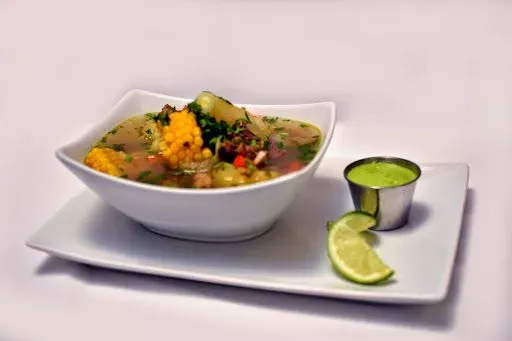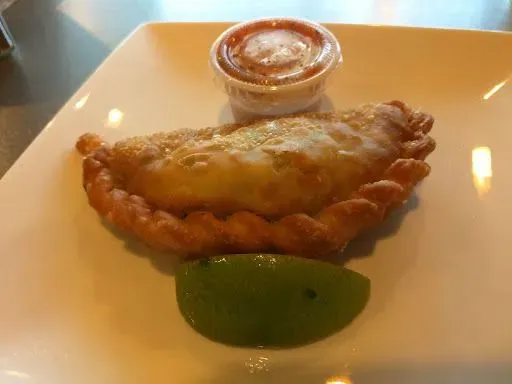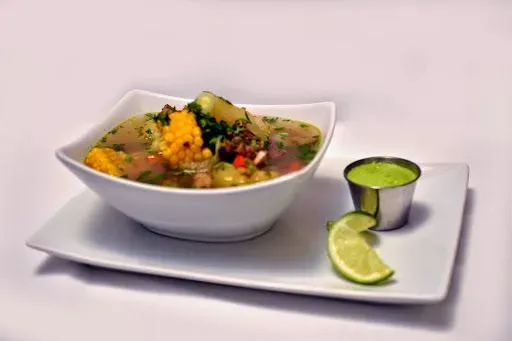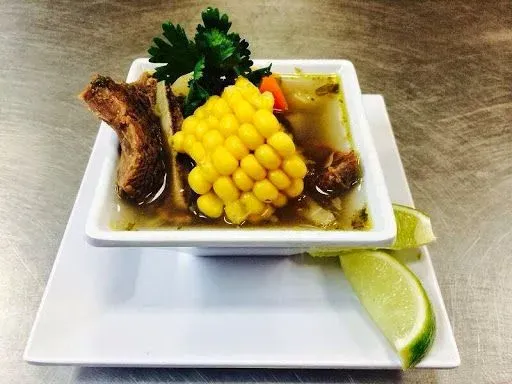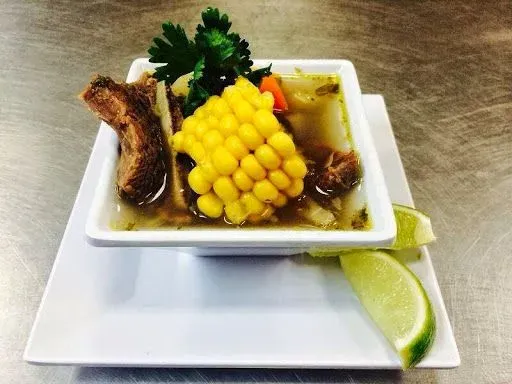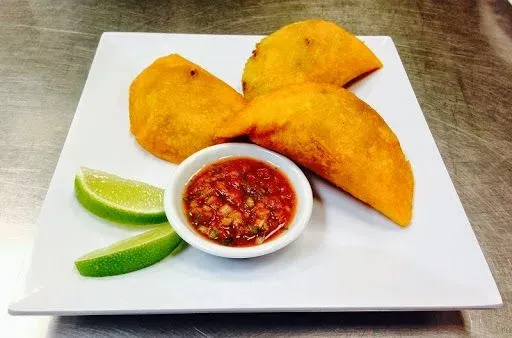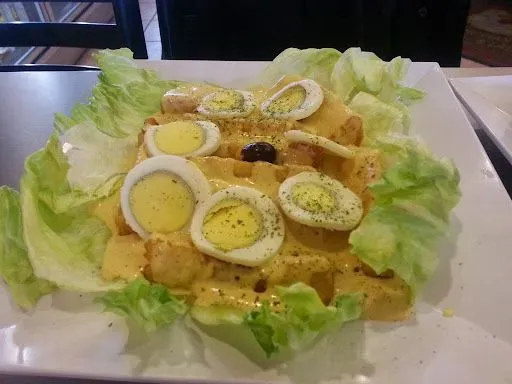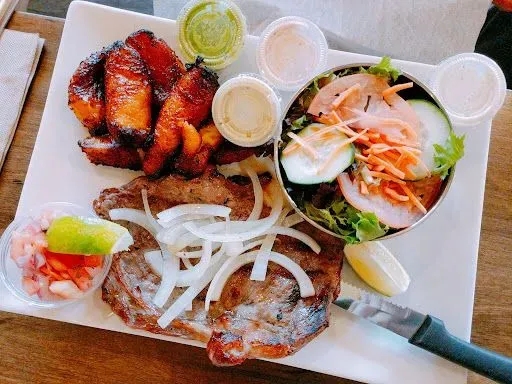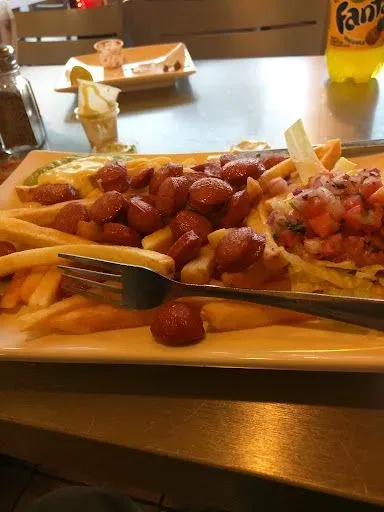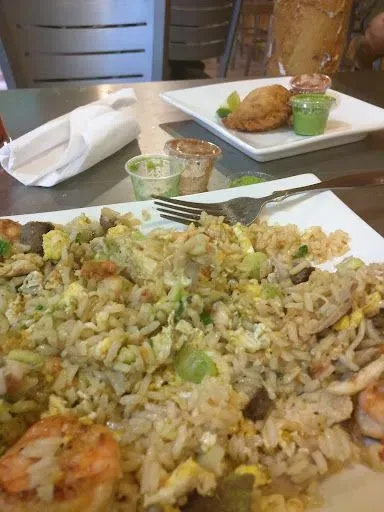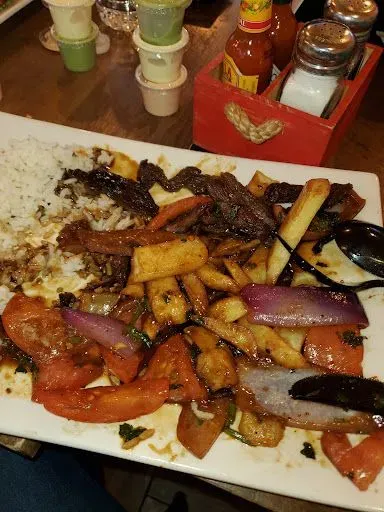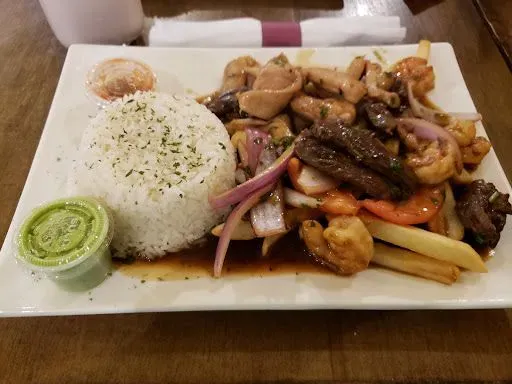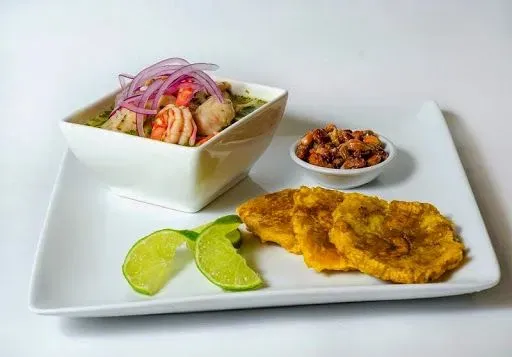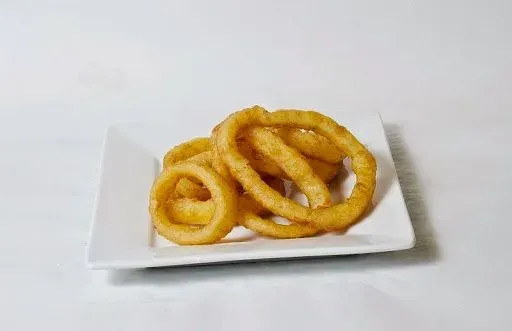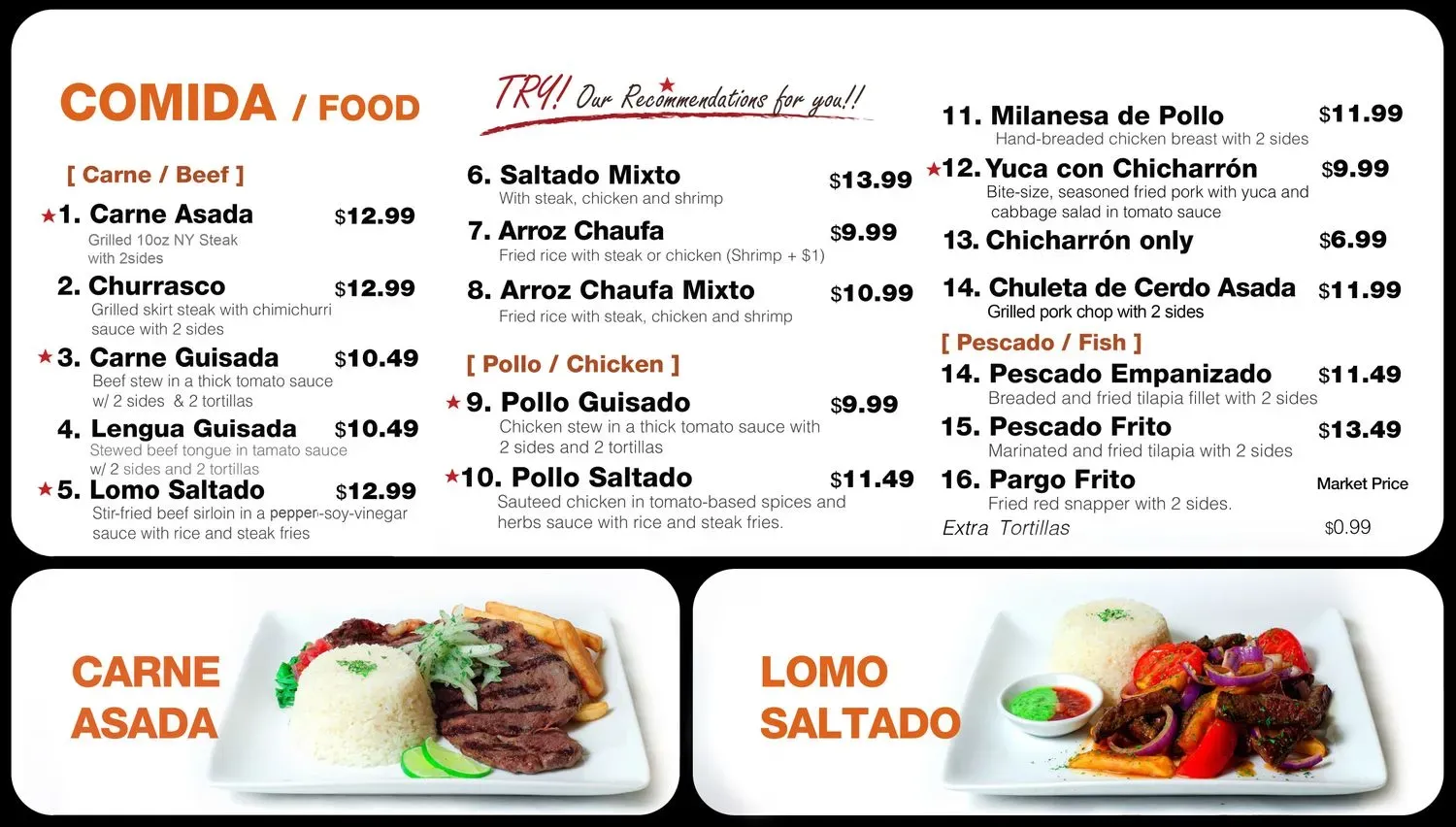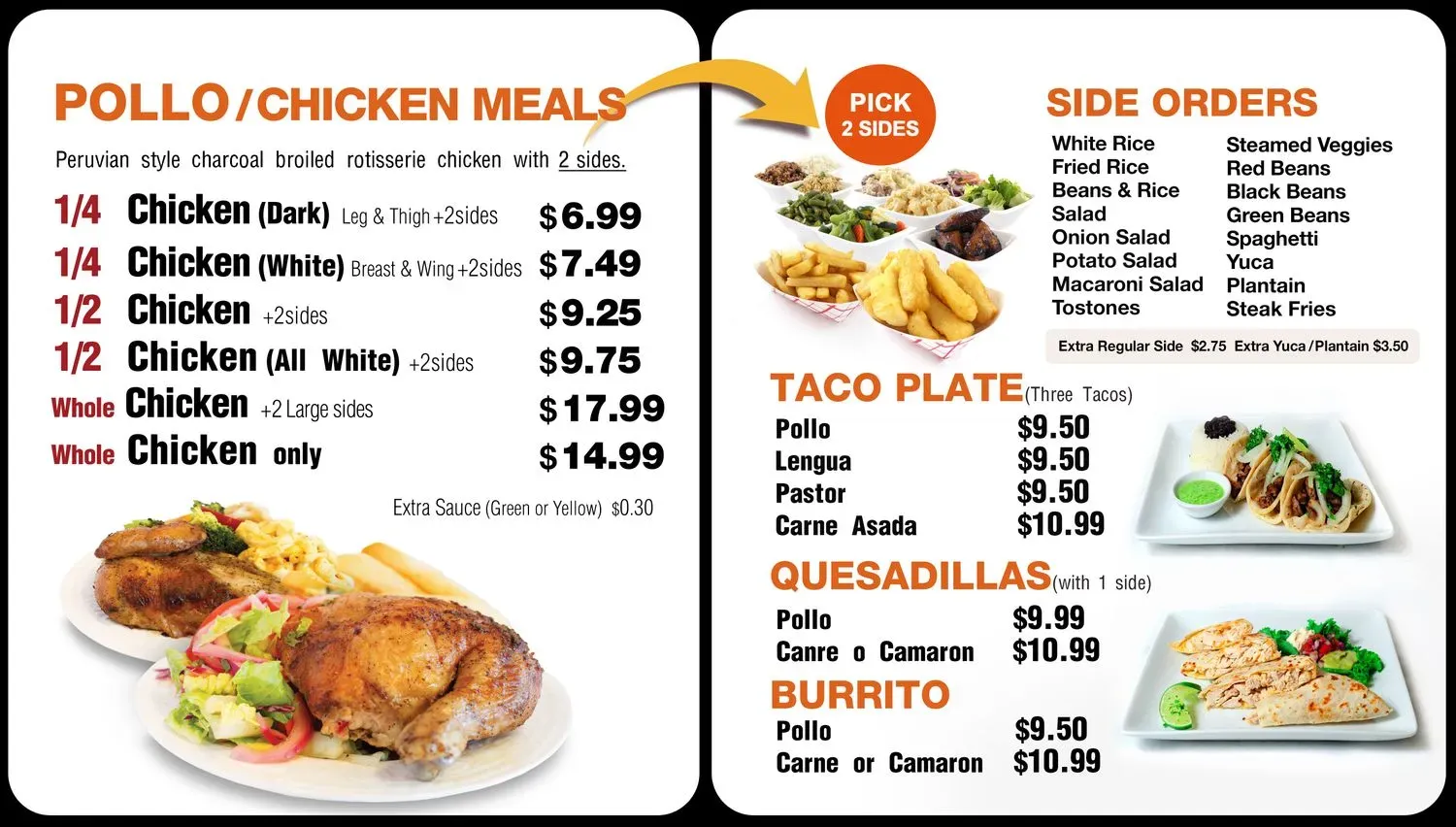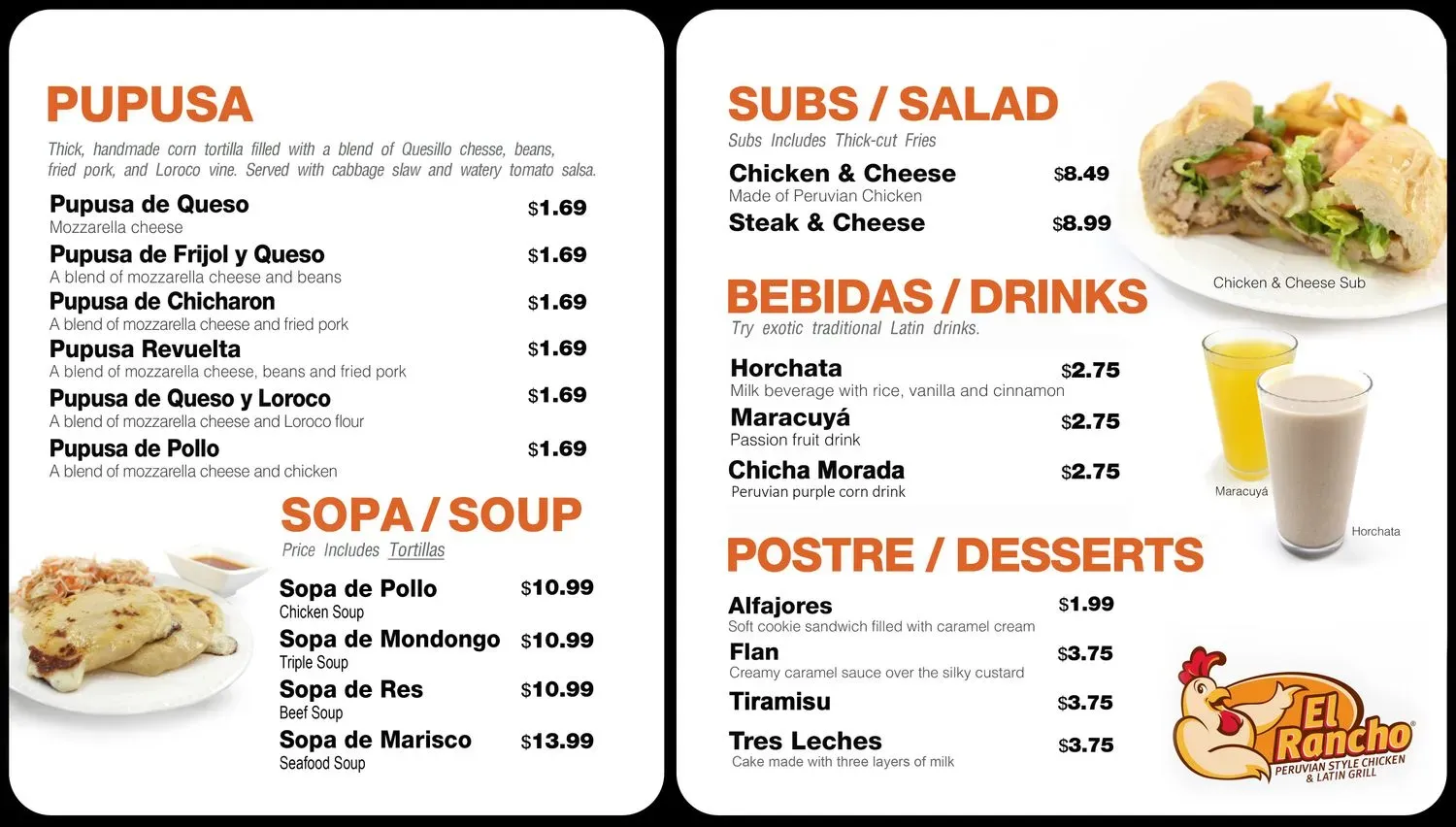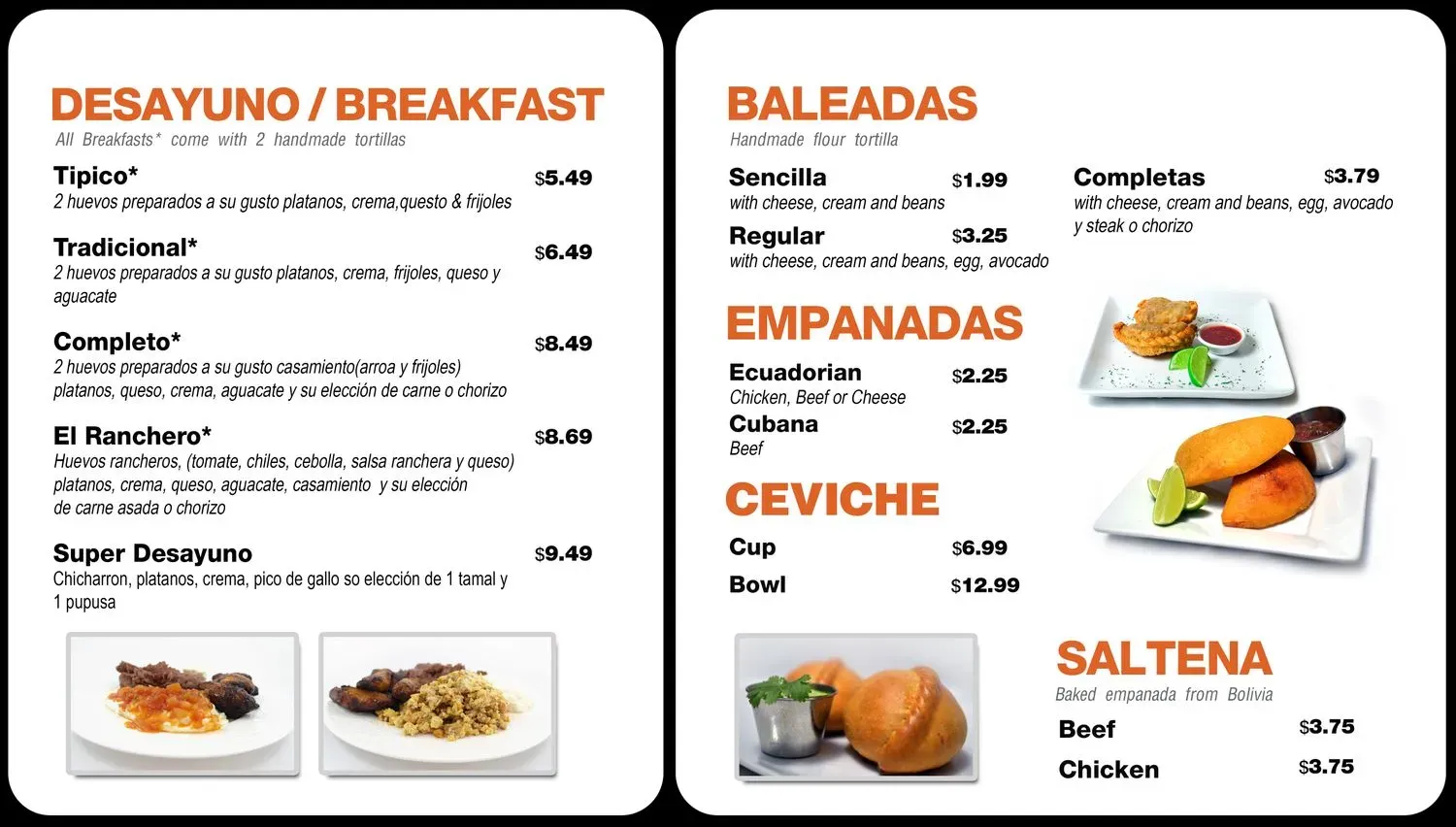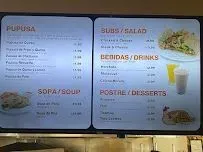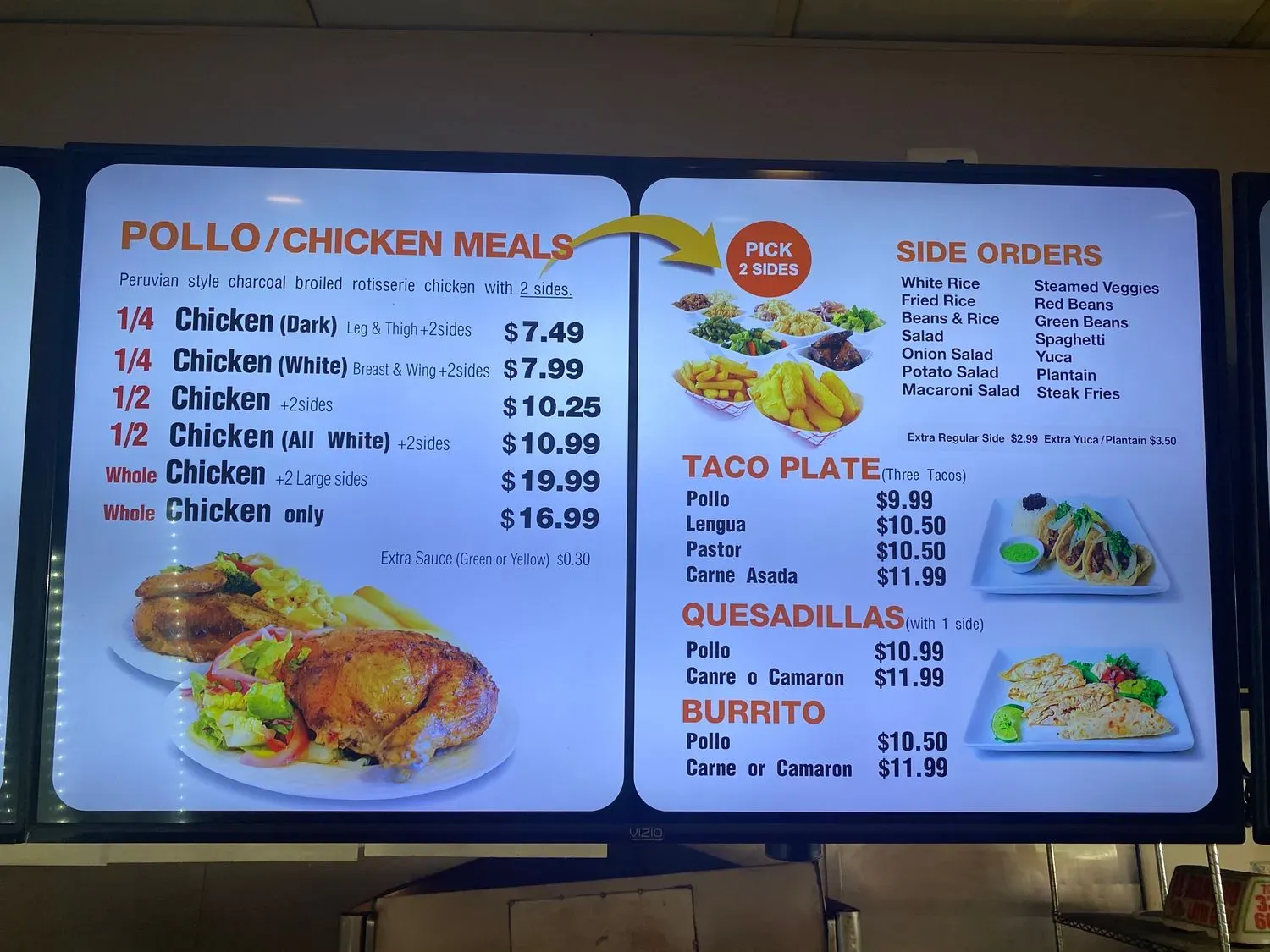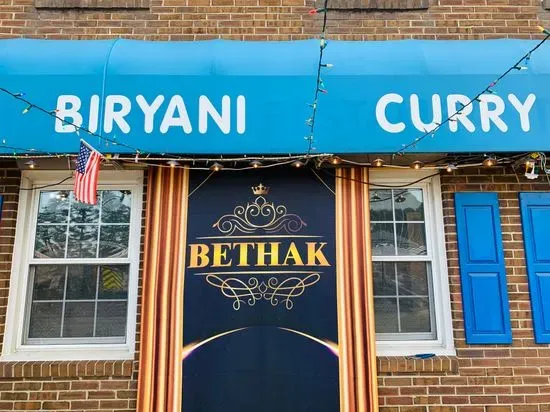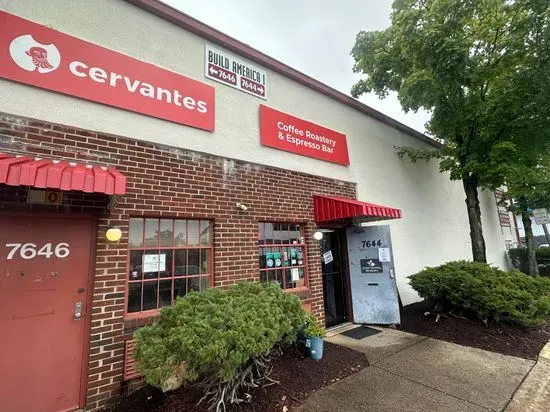Search
Appetizers
- Aguadito De Pollo (Chicken)$6.49
- EmpanadasChicken or Beef$1.99
- Empanada De Queso (Cheese)$1.99
- SaltenasChicken, Beef or Pork$2.79
- Aguadito De Pollo (Chicken)$2.19
- Sancocho De Res (Beef)$2.19
- Ceviche$6.99
- Empanada Cubana$1.99
- Sancocho De Res ( Beef)$6.49
- Empanada Colombiana$1.99
- Papa O Yuca A La HuancainaBoiled potato or yucca with fresh cheese and yellow pepper sauce$5.25
- PupusasChoice of Cheese, Queso con Loroco, Frijol con Queso, or Revueltas$1.59
- Ceviche$11.49
Sandwiches
- Chicken Sandwich$7.49
- Steak & Cheese Sandwich$8.49
Entrees
- Grilled Chicken Or Steak Salad$7.49
- Pescado A La PlanchaGrilled fish with 2 sides: French Fries, Yuca Fries, Sweet Plantain, White Rice, Baby Yellow Potato, Sweet Potato Fries, Onion Rings, Tostones, Garden Salad, Rice & Beans, Tortillas$11.99
- ChurrascoGrilled 10 oz skirt steak with chimichurri sauce with 2 sides: French Fries, Yuca Fries, Sweet Plantain, White Rice, Baby Yellow Potato, Sweet Potato Fries, Onion Rings, Tostones, Garden Salad, Rice & Beans, Tortillas$12.99
- Carne AsadaGrille 10 oz NY Steak with 2 sides: French Fries, Yuca Fries, Sweet Plantain, White Rice, Baby Yellow Potato, Sweet Potato Fries, Onion Rings, Tostones, Garden Salad, Rice & Beans, Tortillas$12.49
- Grilled Steak TacosIncludes Rice and Beans$8.99
- Quesadilla (Steak Or Shrimp)Includes 1 side of your choice: French Fries, Yuca Fries, Sweet Plantain, White Rice, Baby Yellow Potato, Sweet Potato Fries, Onion Rings, Tostones, Garden Salad, Rice & Beans, Tortillas$10.99
- Quesadilla (Chicken)Includes 1 side of your choice: French Fries, Yuca Fries, Sweet Plantain, White Rice, Baby Yellow Potato, Sweet Potato Fries, Onion Rings, Tostones, Garden Salad, Rice & Beans, Tortillas$9.99
- Super BurritoChicken, Steak or Shrimp. Includes 1 side of your choice: French Fries, Yuca Fries, Sweet Plantain, White Rice, Baby Yellow Potato, Sweet Potato Fries, Onion Rings, Tostones, Garden Salad, Rice & Beans, Tortillas$9.99
- Chuleta De Cerdo AsadaIncludes 2 sides of your choice / grilled pork chop: French Fries, Yuca Fries, Sweet Plantain, White Rice, Baby Yellow Potato, Sweet Potato Fries, Onion Rings, Tostones, Garden Salad, Rice & Beans, Tortillas$11.99
- Chicharron PlatterIncludes 2 sides of your choice: French Fries, Yuca Fries, Sweet Plantain, White Rice, Baby Yellow Potato, Sweet Potato Fries, Onion Rings, Tostones, Garden Salad, Rice & Beans, Tortillas$10.79
- Chicharron De Puerco (Lb)Deep fried pork$7.49
- Milanesa De Pollo O CarneHanbreaded chicken or steak with 2 sides: French Fries, Yuca Fries, Sweet Plantain, White Rice, Baby Yellow Potato, Sweet Potato Fries, Onion Rings, Tostones, Garden Salad, Rice & Beans, Tortillas$11.79
- SalchipapasSliced hotdog with fries$7.25
- Arroz Chaufa CombinacionFried rice combination (Steak, Chicken and Shrimp)$10.99
- Arroz Chaufa(Pollo, Camaron o Carne) fried rice ( chicken, shrimp or beef)$9.69
- Pollo SaltadoSauteed chicken strips with tomatoes & Onions with fries and rice$10.49
- Camaron SaltadoSauteed shrimp with tomatoes & onions with fries and rice$11.99
- Lomo SaltadoSauteed Steak strips with tomatoes & onions with fries and rice$11.99
- Saltado MixtoSauteed steak, shrimp & chicken strips with tomatoes & onion with fries and rice$13.99
- 1/4 ChickenWith 2 sides of your choice: French Fries, Yuca Fries, Sweet Plantain, White Rice, Baby Yellow Potato, Sweet Potato Fries, Onion Rings, Tostones, Garden Salad, Rice & Beans, Tortillas$6.99
- 1/2 ChickenWith 2 sides of your choice: French Fries, Yuca Fries, Sweet Plantain, White Rice, Baby Yellow Potato, Sweet Potato Fries, Onion Rings, Tostones, Garden Salad, Rice & Beans, Tortillas$8.39
- Whole ChickenWith 2 sides of your choice: French Fries, Yuca Fries, Sweet Plantain, White Rice, Baby Yellow Potato, Sweet Potato Fries, Onion Rings, Tostones, Garden Salad, Rice & Beans, Tortillas$15.49
Beverages
- SmoothiesGuanabana, Banana, Maracuya, Pina Colada, Strawberry, Mango, Piña and Mora.$2.99
- Coffee, Tea Or Hot Chocolate$1.49
- Bottle Drinks$1.69
- Natural DrinksHorchata, Maracuya and Chicha Morada$1.99
Combos
- Combo #3Chicken sandwich / Sandwhich de Pollo, French fries or fried yucca and garden salad (Papas o yuca frita con ensalada)$8.99
- Combo #2Half Chicken 1/2 pollo, French fries or fried yucca and garden salad ( Papas o yuca frita con ensalada)$8.99
- Combo #1Quater chicken 1/4 pollo, french fries or fried yucca and garden salad (Papas o yuca frita con ensalada)$7.49
Desserts
- Cuatro Leches Cake$3.99
- Alfajor Argentino$1.95
- Alfajor PeruanoA Delight Dessert from Peru$1.95
- Flan$2.79
- Arroz Con Leche$3.29
- Home Made Ice CreamCoconut, Mango, Maracuya, Lulo, Locuma and Mora$1.99
- Tiramisu$3.69
- Tres Leches Cake$3.69
Sides
- Tortillas$1.99
- Garden Salad$2.39
- Tostones$2.39
- Rice And Beans$2.39
- Onion Rings$2.39
- Sweet Potato Fries$2.39
- Yuca Fries$2.39
- Sweet Plantains$2.39
- French Fries$2.39
- Baby Yellow Potato$2.39
Specialties
- FanescaFanesca is a soup traditionally prepared and eaten by households and communities in Ecuador during Holy Week. The components of Fanesca and its method of preparation vary regionally, or even from one family to another. It is typically prepared and served only in the week before Easter (Holy Week). It is a rich soup, with the primary ingredients being figleaf gourd (sambo), pumpkin (zapallo), and twelve different kinds of beans and grains including chochos (lupines), habas (fava beans), lentils, peas, corn and others, together with bacalao (salt cod) cooked in milk, due to the Catholic religious prohibition against red meat during Holy Week. It is also generally garnished with hard boiled eggs, fried plantains, herbs, parsley, and sometimes empanadas. The twelve beans represent the twelve apostles of Jesus, and the bacalao is symbolic of Jesus himself. Fanesca is usually consumed at midday, which is generally the principal meal of the day within Ecuadorian culture. The making and eating of fanesca is considered a social or family activity
